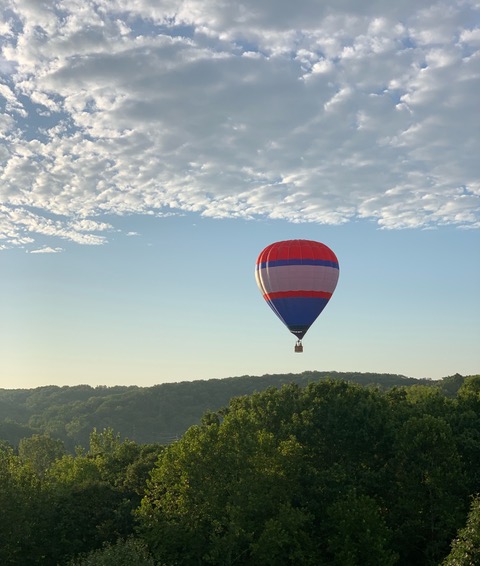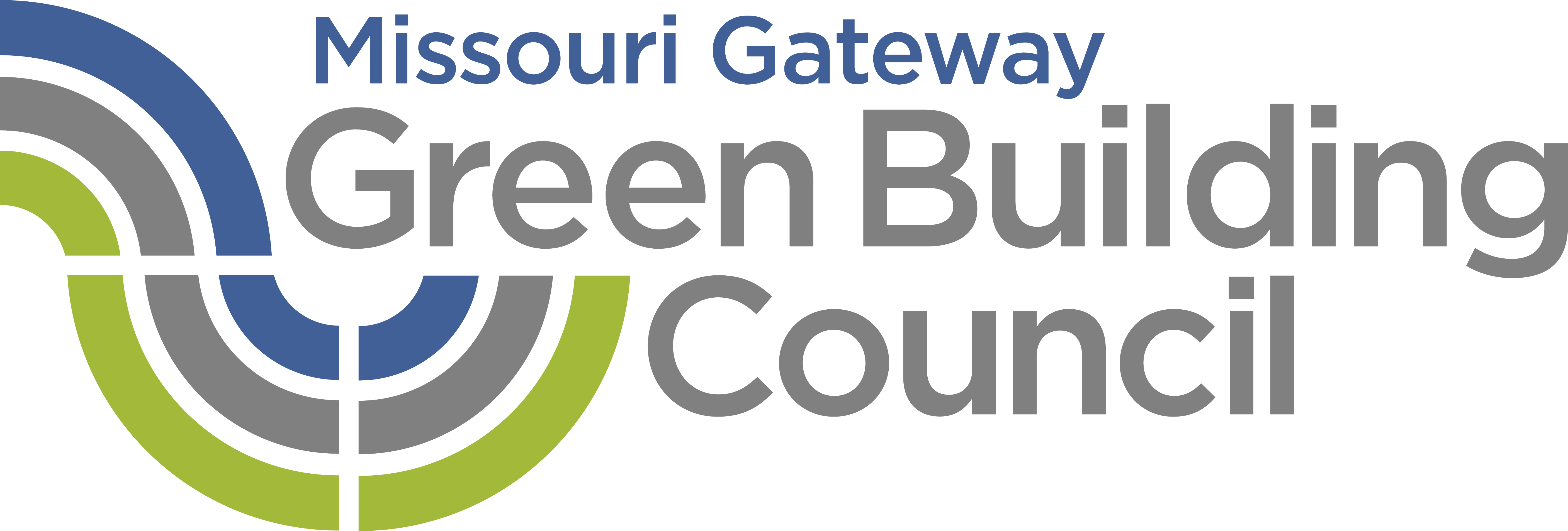Debra (Debb) Wheeler has been a member of Missouri Gateway Green Building Council since July of 2019. She is an active member of our Mid-Missouri Branch in Columbia, MO. We are excited to feature her in a member spotlight!
DEBB’S GREEN BUILDING CONNECTION: While I was an undergraduate in the University of Missouri’s environmental design program, there were embryonic conversations about the newly launched U.S. Green Building Council and LEED rating system, but my own focus at the time was historic preservation. Moving from those studios to the Taliesin estate in Wisconsin gave me the opportunity to immerse myself in the work of an architect who placed nature and natural forms at the forefront of his work. Along with his history and achievements, I began to learn about biophilia and interpret its representation in the buildings and landscape for visitors to Frank Lloyd Wright’s home and the school which was still actively teaching his principles at that time.
After returning to Kansas City, my curiosity about green building intensified. I joined the communications committee with the USGBC’s Central Plains Chapter, and began to apply what I had learned to writing about the innovations of local architects and engineers. I also accepted a position with the Kansas City Federal Division of Burns & McDonnell, a multi-national engineering corporation that was founded in Kansas City in 1898. As part of my duties there, I led a document control team serving the LEED certification mandates of the Obama administration. I worked with my team to organize LEED project certification documentation for the division. It was a fundamentally thorough and practical education in the professions that construct our built environment. I also earned LEED AP ND and SITES AP credentials during my years with Burns & Mac.
More recently, as the pandemic closures began to ease, I brought my experience with me into my current position with the Daniel Boone Regional Library. I joined the organization’s sustainability committee not long after I arrived. The library district has recently completed its new Strategic Plan, which includes an environmental sustainability goal statement and a performance commitment to “increase the number of sustainable choices by 30% each year.” The district’s Southern Boone County branch at Ashland hosts a native plant garden on its grounds, which serves as an “outdoor classroom” for patrons, and is a registered “Monarch Waystation.”
This past year, I became a member of the Sustainable Libraries Initiative (SLI), a new certification program which includes building resilience and benchmarking energy efficiency as key achievements among its many categories. Since the program completed its pilot period a little more than a year ago, certification success stories have begun to spread quickly. SLI’s research which centers libraries as community recovery hubs in the aftermath of weather disasters is particularly intriguing to me.
While we are seeing many beautifully realized LEED certified library buildings constructed now, most libraries’ reliance on their local tax bases for funding has meant slower progress for some districts. In 2019, however, the American Library Association adopted sustainability as one of its “core values of librarianship,” and the discipline is focused on implementation. Local institutions could become important partners for A/E firms in the years to come.
SUSTAINABILITY PASSION: Like most of us who have cherished memories from gardening with a favorite adult, designing resilient landscapes is my passion, and studying native plant cultivation is my current obsession. The Missouri Prairie Foundation has a newly released professional certification program through Grow Native that they will make available to the public in April. If the details in their study guide are any indication, the exam will be rigorous and challenging. Applying this knowledge as a consultant for designing children’s gardens and play spaces would be incredibly satisfying.
MOST MEANINGFUL EXPERIENCE WITH MGGBC: Every meeting puts me in a room with people who also earned their first degrees in the buildings of the University of Missouri’s historic WPA era White Campus. I’m always inspired by my time with them. While many of us during my undergraduate days focused on preservation and architectural history, the program’s focus now has decidedly shifted to the future. These days, the faculty and students at MU’s Architectural Studies program submit their innovative projects to the U.S. DOE’s Solar Decathlon every year. Their students will graduate with the skills to adapt the built environment as climate change requires. It’s an impressive move, and I’m proud to be associated with them.
WHAT WILL MOST IMPACT THE FUTURE OF GREEN BUILDING: Since I’m a devoted regenerative landscape advocate, I’ll begin with that. The understanding of the value of soils to significantly sequester carbon, and the current native plantings trend will make a real difference locally to communities. Ecosystem services provided by regenerative landscapes were highly visible during the COP26 conference, and received some of the largest pledged investments. The American Society of Landscape Architects’ forward-facing commitments to environmental justice and diversity in its profession are critical steps to ensuring everyone has a stake in the work to come.
Interestingly, implementation of last year’s Inflation Reduction Act is revealing that the energy transition is well on its way, and is being quietly embraced in unexpected ways. A recent opinion piece in the New York Times was a true eye-opener for me. The article reported that tax incentives for projects could reach nearly $1 trillion dollars, with the largest share of funds going to states such as Texas, North Carolina and Kansas. The Rocky Mountain Institute has reported that the I.R.A could deliver nearly double the subsidies per capita to Republican led states. Between the passage of the I.R.A and the end of the year, new utility-scale investments in renewables quickly ramped up, with more than 80% reported in congressional districts held by Republicans. As this rapid momentum in rebuilding continues, it seems the progress we have worked for decades to realize are finally being realized on the ground at scale, and past ideological barriers are quietly collapsing.
FAVORITE LEED OR SUSTAINABILTY PROJECT: The project I continue to be most impressed by is the Bullitt Center, a six-story certified Living Building in Seattle, the first commercial building of its kind in the world. Housing the Bullitt Foundation and similar tenants, it is a Net-Zero energy facility which produces more than it uses annually, solely through the 14,000 sq. ft. photovoltaic array on its roof. With other innovative, high-efficiency features too numerous to list here, it’s an absolute inspiration.

FAVORITE PLACE IN THE MID-MO REGION: There are so many places that come to mind, especially the satisfying hours I spend with the community and my partners in service at the Daniel Boone Regional Library. But my favorite place is my apartment. I chose the complex before retiring to Columbia due to its advertised sustainability features, and it’s been a comfortable home during my time here. The complex is located on a ridge above the Hinkson Creek Valley just south of the MU campus. As spring comes, I will begin to spend warm afternoons on my shady third-story balcony overlooking the forest to the east. I grow native plant and herb species in containers that intentionally draw hummingbirds to feed. Sitting quietly with that landscape is an exercise in absolute peace.

